Electronic Speed Controller (ESC): What It Is, Types, and How It Works

Have you ever wondered how drones go faster or slower? Or change directions from left to right, up and down? From consumer to professional and industrial, all drones rely on one critical component for speed and direction control – the Electronic Speed Controller (ESC).
The ESC guarantees pinpoint motor movements and power management, which directly affect the overall drone performance. Without ESCs, drones will be unusable owing to control and safety concerns.
This drone ESC guide examines what an ESC is and how it functions in drones. Beyond that, you’ll also learn the types of ESCs for drones, how to choose one, and tips about the Electronic Speed Controller.
What is an ESC for Drones?
The Electronic Speed Controller (ESC) is an electronic circuit that functions as an intermediary for the flight controller, battery, and motors. It regulates the speed and direction of drones by converting power from the battery into energy to spin each motor.
There are two main types of ESCs used for specific motor types: brushed and brushless:
- The earlier design, brushed ESCs, are simpler and work with brushed DC motors. They control the speed of the motor through a process called pulse width modulation (PWM), which chops the voltage it receives from the battery. But because the brushes touch the motor, they wear out faster.
- Alternatively, brushless ESCs use electronic switches to generate a three-phase control AC current instead of physical brushes. This upgraded feature makes them more efficient, durable, and responsive, which is why they’ve become the standard for modern drones.
In short, brushed ESCs are paired with brushed motors, whereas brushless ESCs are designed for brushless motors. An ESC isn’t just a single component; instead, it’s made up of many smaller parts. Here’s what you’ll mainly find in an ESC:
Microcontroller
Acting as the brain of the ESC, the microcontroller translates flight controller signals into power pulses to regulate motor speed.
Gate Driver
The gate driver boosts low-voltage controller signals to high-voltage pulses for MOSFETs, ensuring efficient motor power, fast switching, and lower heat.
MOSFETs
MOSFETs are high-speed switches in ESCs that convert battery DC into three-phase AC to efficiently power brushless drone motors systems.
Capacitor
The capacitor stabilizes voltage and filters electrical noise. It acts as a shock absorber for the power system.
Each of these components has its own vital function in the ESC to power up your drone. They work in harmony to ensure balance, speed, and thrust for a safe and efficient drone performance.
How Does an ESC Work?
The Electronic Speed Controller (ESC) operates through a streamlined process to control the speed of the electric motor.
Step 1: First, the drone pilot inputs command signals using the flight controller.
Step 2: The drone then receives the control signal, such as a pulse-width modulation (PWM), a OneShot, or a MultiShot, through its onboard receiver.
Step 3: Next, the microcontroller interprets the signal and then adjusts the motor speed according to the intended output.
Step 4: The MOSFETs convert DC power from the battery into AC signals for brushless motors.
Step 5: The ESC adjusts voltage and current timing across the motor’s three phases to control RPM. Higher frequencies lead to higher speeds and vice versa.
ESCs use overcurrent protection, thermal shutdown, and low-voltage cutoff to safeguard both the motor and battery.
Types of ESC for Drones
There are many types of ESC for drones, and each one serves a different design and purpose.
Brushed ESC
Brushed ESC, as the earlier design, regulates simple DC motors with basic on/off or speed control, utilizing physical brushes to switch current within the motor. Due to this straightforward mechanism, on top of its affordability, they’re typically used in beginner and older models of drones.
However, brushed ESCs are generally less efficient and require regular maintenance, resulting in them being phased out in professional models.
Brushless ESC
The successor of their brushed counterparts, brushless ESCs provide better precision and motor performance by using a three-phase electronic control. This upgrade made it the standard for modern drones, such as FPV racing drones and fixed-wing models.
As they’re an intelligent power management system built for high-performance applications, brushless ESCs are also more complex and expensive.
Analog ESC and Digital ESC
Analog ESCs rely on traditional PWM (Pulse Width Modulation) signals to control motor speed. Although simpler, these signals are also slower and more susceptible to slight delays or interference, which can affect the drone’s responsiveness and precision.
On the other hand, digital ESCs use digital signal processing for communication between the flight controller and the motors. It enables faster, more accurate signal transmission with minimal latency, resulting in smoother acceleration and better flight stability.
As such, analog ESCs were primarily used in older drone models due to their low cost and ease of installation. However, due to performance limitations, digital ESCs are now the standard for most drones.
4-in-1 ESC and Individual ESC
A 4-in-1 ESC combines four separate brushless ESC units into a single board, saving space and reducing wiring clutter.
This compact design facilitates easier installation and maintenance, which is perfect for small and beginner drones. The downside, though, is that when one ESC fails, the entire board needs to be replaced.
Meanwhile, individual ESCs are separate controllers meant for larger and heavy-duty drone setups, such as hexacopters and fixed-wing models.
They offer greater adaptability, stability, and reliability. Individual ESCs can be swapped without affecting the others. However, this setup involves more complex wiring and heavier payload demands.
How to Choose the Right ESC for Your Drone
At this point, you’ve learned the fundamental knowledge about ESCs, and you’re ready to find the right one for your drone. But how exactly do you choose? What are the factors that you should consider?
If you’re stuck with these questions in mind, look no further.
Current Rating
The ESC’s current rating should safely handle the motor’s maximum current. For that, reserve a safety margin of about 20%-30% higher current rating than the motor’s maximum current draw to prevent overheating and burnout.
Input Voltage
Ensure the ESC matches the drone’s battery; most use LiPo batteries ranging from 3S to 6S. An incompatible voltage input can cause malfunctions and even result in the complete failure of both the ESC and the motor.
Size and Weight
Choose an ESC that suits the size and weight of your drone frame—compact ESCs for lightweight drones, and larger ESCs for heavy-duty models.
Firmware
Pick a reliable ESC firmware, such as BLHeli, SimonK, KISS, AM32, and BlueJay: these firmwares control performance and fine-tuning options.
Battery Eliminator Circuit (BEC)
A BEC powers the flight controller and receiver directly. Non-BEC needs external power but offers cleaner current flow for sensitive electronics.
ESC Protocols
There are several ESC protocols. Choosing the correct ESC will define how fast and accurately flight signals are sent and translated to control motor speed.
- Standard PWM: Standard, slower response, and are now rarely used in newer drone models.
- Oneshot 125 / Oneshot 42: Faster analog protocols for high-performance applications like multirotor and FPV drones for general purposes.
- Multishot: A faster upgrade of Oneshot protocols but requires specialized ESCs, making them more suitable for niche uses, such as racing and freestyle drones.
- DShot: Other than providing a faster and more precise digital communication protocol, DShot also has noise resistance, bidirectional communication, and requires no calibration.
- ProShot: A hybrid digital protocol, it combines the speed and accuracy of digital protocols and the simplicity and flexibility of analog protocols
ESC Processors
Modern ESCs use 32-bit processors for faster computation and smoother motor control in comparison to older 8-bit versions. These are ideal for FPV and high-performance drones.
Capacitors
A high voltage and large capacitance are crucial to manage voltage spikes and prevent overheating. But the most essential factor you should consider is a low equivalent series resistance (ESR), which dampens power supply noise.
4-in-1 or Individual ESCs
Choose an ESC structure type based on the purpose and application of your drone. A 4-in-1 ESC is ideal for compact drones as it saves space and neatly organizes wires. Meanwhile, individual ESCs have better heat management and easier and cheaper repairs, which is essential for professional drones.
Picking the correct ESC for your drone might be tricky, as there are a lot of factors to consider. Remember what you’ve just read to help you along the way.
ESC Installation & Wiring Guide
Properly installing the ESC ensures not just speed and direction control but also stability, safety, and power efficiency. Follow these steps for proper setup:
| Step | Description |
|---|---|
| Step 1: Mounting the ESC | Place individual ESCs near motor arms or mount 4-in-1 ESCs in the center stack. Keep cooling surfaces exposed to airflow and away from heat. Secure with zip ties, tape, or heat-shrink. |
| Step 2: Wiring Connections | ESC to Motor: Connect the three motor wires to ESC pads using quality soldering or connectors (XT60/XT90/bullet). Test and adjust motor direction in software. ESC to Flight Controller: Connect signal and ground wires to the correct FC motor pads (Motor 1 → ESC 1, etc.) for accurate control. ESC to Battery: Connect red (+) and black (–) ESC wires to the battery or PDB. Use an XT60/XT90 connector and verify polarity to prevent damage. |
| Step 3: Safety Checks | Ensure ESCs are secure, check polarity, inspect solder joints for shorts, and confirm all wires are firmly connected. |
Essential Tools and Connectors
Installing the ESC on your drone requires specific tools and connectors. Here’s what you’ll have to prepare:
| Tool/Connector | Purpose |
|---|---|
| High-Quality Soldering Iron | Ensures a reliable, strong, and efficient electrical connection |
| Solder and Flux | Low-temp solder (for small signal pads) and quality flux for clean joints |
| Heat Shrink Tubing | Insulates exposed wires and connections (various sizes) |
| Multimeter | Crucial for continuity tests to check for shorts between positive and negative terminals before plugging in the battery |
| Zip Ties, Velcro Straps, or Double-Sided Foam Tape | Physically secures the ESCs to the frame |
| Quality Connectors (XT60, XT90, bullet) | Allows easy connection/disconnection of components and reliable connection from ESC to motor, flight controller, and battery |
| Wire Strippers/Cutters | Prepares and cuts wires to the appropriate lengths |
How to Calibrate the ESCs
The drone’s flight controller depends on the Electronic Speed Controller (ESC) to maintain a consistent, balanced thrust between all motors.
Without calibration, drone motors may not synchronize seamlessly, with one being faster or slower than the others. It leads to severe flight instability, loss of control, and the risk of crashes.
You can calibrate ESCs in two ways: through manual and software calibration.
Manual Calibration
The traditional method uses the transmitter throttle to sync endpoints with each ESC. Here’s a step-by-step process for manual calibration.
- Disconnect the main battery from the drone.
- Remove propellers for safety purposes.
- Turn on the transmitter and move the throttle to its maximum setting before powering up.
- Connect the battery to your drone; you’ll hear a series of ESC beeps indicating power-up.
- After the initial beeps, lower the throttle to its minimum setting.
- The ESCs will beep again to confirm the calibration is complete.
Each tone sequence communicates specific ESC statuses — startup, throttle range recognition, or errors. Always listen carefully to confirm the correct setup.
Software Calibration
With the rise of technology, modern drones now allow software calibration. This method automates ESC calibration, providing a more straightforward and more efficient process.
- Connect your flight controller to your computer using a USB cable.
- Open your preferred configuration software.
- Navigate to the motor testing or ESC configuration tab.
- The software allows you to set the Minimum Throttle and Maximum Throttle values digitally to ensure all ESCs receive the same configuration simultaneously.
Software calibration provides greater precision and control, minimizing human error to guarantee perfect synchronization across all drone motors. Beyond that, you can also set up calibration presets for various flight modes.
Common Calibration Issues and How to Fix Them
One last step and you’re finally ready to fly your drone. But then, calibration issues! Now, you’ll have to do more work as you don’t want to risk safety and performance. It’s frustrating, and it kills the enthusiasm.
Save yourself from the trouble. Here are some common calibration issues and how to remedy them.
- Mismatched Throttle Ranges: Occurs when one or more motors spin up earlier than others. Recalibrate all ESCs together and verify identical throttle endpoints.
- No Response or Beeping Errors: This problem often happens due to poor connections, wrong radio settings, or an incompatible ESC protocol. Check power and signal connections, then retry calibration. If it still doesn’t work, consult your ESC’s manual and try a different ESC protocol.
- Unstable Motor Start or Stuttering: Indicates timing issues or problems with electrical, software, or mechanical components.
Ensure all electrical wiring is soldered correctly and connected. Update the ESC firmware or adjust the motor timing in the configuration software. If the stuttering persists, check the screws and batteries for anomalies.
Common ESC Problems & Troubleshooting
Even if you do everything right, you may still have problems with your Electronic Speed Controller (ESC). Knowing how to fix common issues will save you time and money, so that you can get back in the air faster.
Overheating ESC
This may be caused by overcurrent or a poor cooling system. Hot temperatures and continuous high-throttle work also lead to heat buildup.
To prevent this, ensure proper ventilation around your ESCs. If you need a powerful drone, choose an ESC with a high current rating to increase the motor’s maximum draw.
Motor Stuttering or Desync
Timing errors, signal errors, or low battery voltage are usually the root of this issue. You can adjust timing and recalibrate signals to achieve intended results. Updating your ESC firmware can also be a quick fix.
Signal Loss and Throttle Lag
This issue usually stems from loose wiring, damaged connectors, or incompatible signal protocols between the ESC and flight controller. Incompatible firmware may also be a factor.
First, recalibrate your ESCs to match throttle ranges or try a different firmware. If that doesn’t work, double-check signal wires for cuts, poor solder joints, or loose connectors. Repair any defect you see as soon as possible.
Learning about these issues is essential. But how exactly do you spot a faulty ESC before it gets worse? Clear indicators include burning smell, excessive heat, and inconsistent motor response.
Always watch out for these signs, as flying with damaged components puts the drone and the pilot at risk.
ESC Maintenance & Safety Tips
The Electronic Speed Controllers are constantly under stress, handling significant power fluctuations while spinning your motors at high RPMs.
What would happen if they’re neglected? Poor stability and control. Worse, your drone can crash mid-flight or sustain permanent component damage. Proactive maintenance is key for extending your drone’s lifespan and ensuring reliable, worry-free flights.
- Keep ESCs Clean and Cool: Avoid enclosing ESCs too tightly, and instead allow for adequate airflow. It’s also ideal to clean ESCs, especially after dusty or sandy operations, to keep them dust-free. A cool system keeps your drone’s performance consistent.
- Update Firmware and Tuning Settings: Stay up to date with the latest versions of your preferred ESC firmware to take advantage of the latest improvements. Schedule regular retuning and recalibration for optimal throttle response and motor synchronization.
- Prevent Overcurrent and Short Circuits: Ensure that your drone’s wiring is correct and secure using quality connectors. Monitor the ESC for any defects to prevent issues.
Real-World Applications of ESCs
ESCs aren’t limited to just drones; they have a wide variety of practical uses. For any system that relies on precise control of electric motors, ESCs are vital. After all, they’re responsible for smooth acceleration, stability, and energy efficiency.
Below, you’ll find some real-world applications:
Drones and UAVs
ESCs for drones serve as the intermediary between the flight controller and their motors, regulating speed and power distribution. They ensure each motor is in sync and exerts equal thrust.
All types of drones, including multirotor, fixed-wing, and consumer drones, have ESCs. They enable precise control and stabilization, and allow the drone to perform complex aerial tasks.
Electric Cars, Boats, and RC Vehicles
With their smooth accelerations and sharp turns at breakneck speeds, electric cars, boats, and RC vehicles are a thrill to watch. It’s no surprise they’ve become popular recreational and competitive activities.
Now, have you ever wondered how these vehicles can do so? That’s right. It’s all thanks to ESCs, which act as the backbone for the electric propulsion system of electric vehicles.
Robotics and Automation
Robotics and automation have seen huge improvements over the years. Before, all they could do was simple tasks. However, advanced robotics now completes complex assignments across various industries, from agriculture to construction, and everyday life, among others.
Nevertheless, ESC presides over their motor control, providing precise and fluid motion, especially for robotic arms that require exceptional control. They also contribute to longer battery life, reducing both operating costs and environmental impact.
Electric Vehicles and Aerospace
The ESC’s role extends to other high-stakes environments where efficiency and safety are non-negotiable.
In small electric aircraft or specialized aerospace platforms, ESCs manage the high-power, high-reliability electric motors used for propulsion.
Beyond simple speed control, advanced ESCs incorporate numerous safety protocols, including overcurrent protection, temperature monitoring, and voltage cutoff. These factors are crucial for maintaining system integrity and preventing catastrophic failure in both commercial and specialized electric applications.
Future Trends in ESC Technology
One thing is for sure: Electronic Speed Controller (ESC) technology can only get better from this point in time. Driven by higher power density, improved efficiency, and enriched intelligence, ESCs are bound to be more innovative and more adaptable than ever before.
AI and Smart Telemetry
Artificial Intelligence is being used in almost every aspect of technology, and that includes ESCs. AI-powered ESCs will be able to analyze flight data in real-time to automatically adjust timing, throttle curves, and response rates, thereby optimizing performance.
By learning from flight patterns, load conditions, and environmental factors, these intelligent controllers can predict motor behavior and fine-tune power delivery. This results in smoother flights, reduced energy usage, and longer component life.
ESCs with Built-in Sensors
Technology is heading toward greater and more intelligent optimization. For this reason, integrating ESCs with a richer array of sensors has become a trend.
These sensors deliver accurate data, including temperature, current, and RPM information. It leads to a more comprehensive feedback that enables near-instant adjustments to enhance safety, power regulation, and motor synchronization.
Lightweight, High-Efficiency MOSFET Designs
New generations of MOSFETs are being designed to handle higher current loads while producing less heat.
These compact, high-efficiency components support extended flight times and better energy conversion by reducing ESC weight and improving heat dissipation. This new component innovation is particularly beneficial for racing drones, long-endurance UAVs, and electric aircraft, where every gram and watt counts.
Conclusion
The Electronic Speed Controller (ESC) is at the core of every drone’s propulsion system. They supervise control over motor speed, direction, and power distribution while also protecting sensitive electronics from overload and excessive heat.
When selecting an ESC, consider current rating, input voltage, motor type compatibility, firmware type and protocols, as well as size and weight. Choosing the correct ESC ensures safety, reliability, and overall drone performance.
As the world moves headlong into a technological transformation, ESCs are becoming more innovative and more efficient. AI integration, smart telemetry, and lightweight MOSFET designs are absolute game-changers, paving the way for autonomous drones that adapt to changing flight conditions.
At Drone as a Service (DaaS), it’s our mission to support this exciting evolution in drone performance. From consumer to industrial-grade drones, our drone solutions are powered by reliable ESCs to ensure mission success, whether it be mapping, surveying, or inspecting.
FAQs
Can a drone work without an ESC?
No. An Electronic Speed Controller (ESC) is critical for speed and direction control of each motor. Without ESCs, drones will be rendered unsafe and unusable.
How many ESCs does a drone need?
A drone requires one ESC per motor. That said, quadcopters need four ESCs, hexacopters use six, and octocopters use eight. Each ESC independently manages the power going to its corresponding motor.
Are ESCs only needed on bigger drones?
No. All drones need an ESC to safely and efficiently function, even consumer and mini drones.
Can I run two motors off one ESC?
No. Each motor must have its own dedicated ESC. Running two motors on a single ESC can cause uneven power delivery, overheating, or failure since ESCs are designed to handle one motor’s feedback loop at a time.
How do I match my ESC and battery?
Match your ESC to the voltage rating of the battery of your drone. If you’re using a 4S LiPo battery (14.8V), your ESC must support at least that voltage range. Also, ensure the ESC’s current rating (amps) exceeds about 20-30% the maximum current draw of your motor setup for safe operation.
How do you match a brushless motor to an ESC?
Matching your brushless motor to the ESC is easy. Find an ESC that exceeds both the motor’s maximum current draw and voltage rating. For instance, assuming you’re using a motor that draws 25A at full throttle. Use a brushless ESC rated for 30A or higher to provide a safety margin and prevent overheating.
Does ESC need to be programmed?
No. ESCs can work just fine without being programmed. However, you can get plenty of benefits from programming or firmware tuning modern ESCs. It lets you adjust parameters, including timing, braking strength, startup power, and motor direction for smoother and safer performance.
How much does a drone ESC cost?
There are different kinds of ESCs, and depending on power rating, features, and quality, the cost may also differ. Generally, ESCs can be as affordable as $40 to as expensive as $1,500. This broad price range gives you a lot of options that will suit your needs and preferences.
Read Our Other Blogs

27 November 2025
The Ultimate Guide to Drone Maintenance and Repair
The Ultimate Guide to Drone Maintenance and Repair Flying a drone is exciting, but proper maintenance ensures smooth, safe, and...
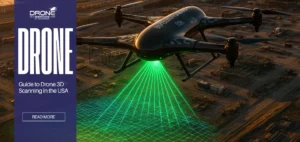
26 November 2025
Guide to Drone 3D Scanning in the USA
Guide to Drone 3D Scanning in the USA Drone-based 3D scanning is changing how teams collect site data. Contractors, developers,...
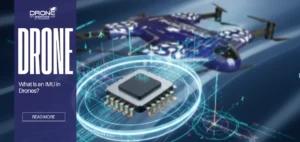
25 November 2025
IMU in Drones: Functions & Benefits
What Is an IMU in Drones? Functions, Benefits, and Accuracy Explained It’s easy to watch a drone fly and think...
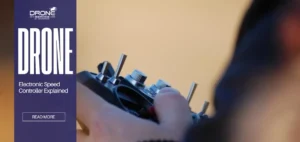
24 November 2025
Electronic Speed Controller (ESC) Explained
Electronic Speed Controller (ESC): What It Is, Types, and How It Works Have you ever wondered how drones go faster...
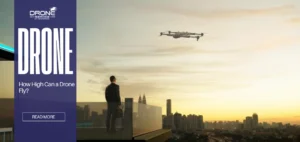
21 November 2025
How High Can a Drone Fly? Legal & Technical Limits
How High Can a Drone Fly? Legal & Technical Limits Drones behave differently at high altitudes and in windy conditions....
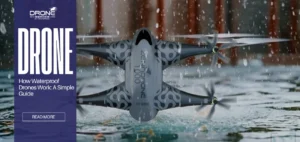
20 November 2025
How Waterproof Drones Work: A Simple Guide
How Waterproof Drones Work: A Simple Guide Waterproof drones are engineered to operate safely around water, unlike standard drones that...


















